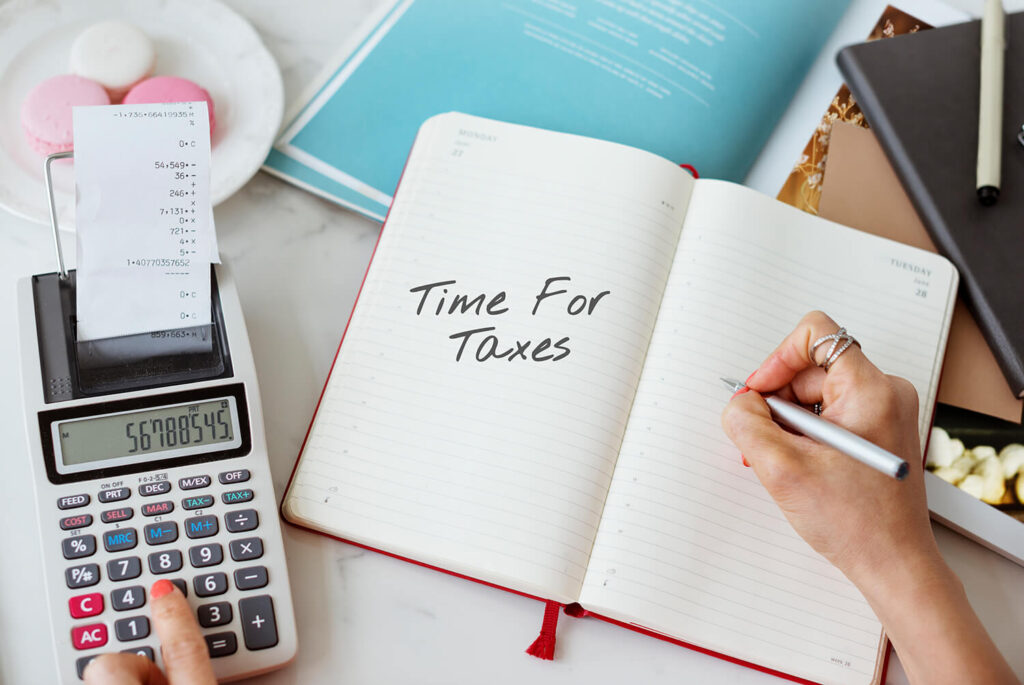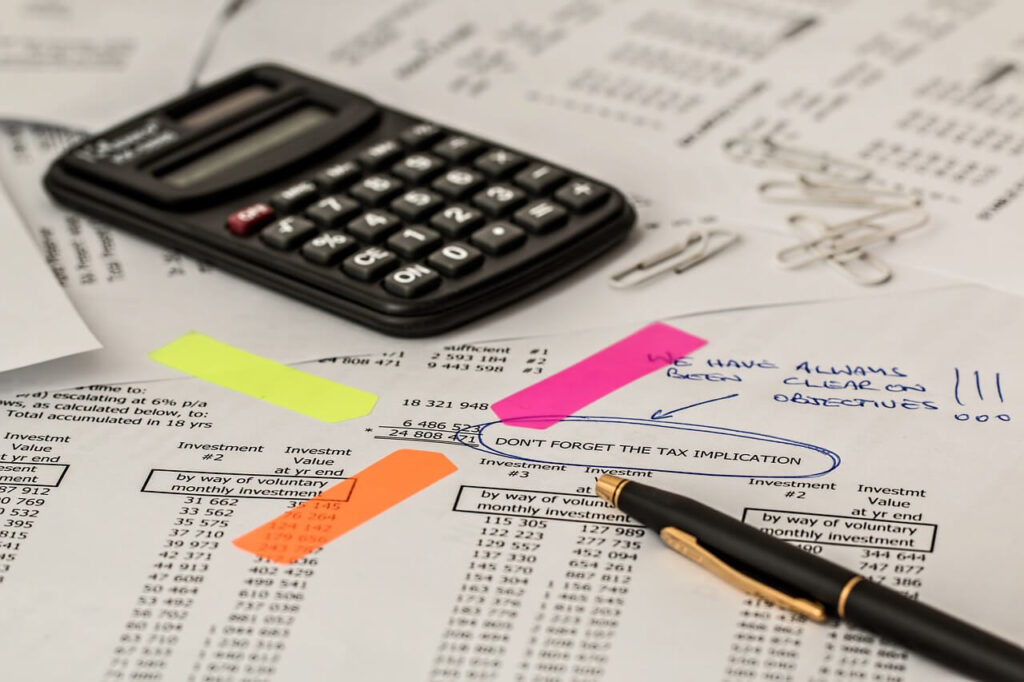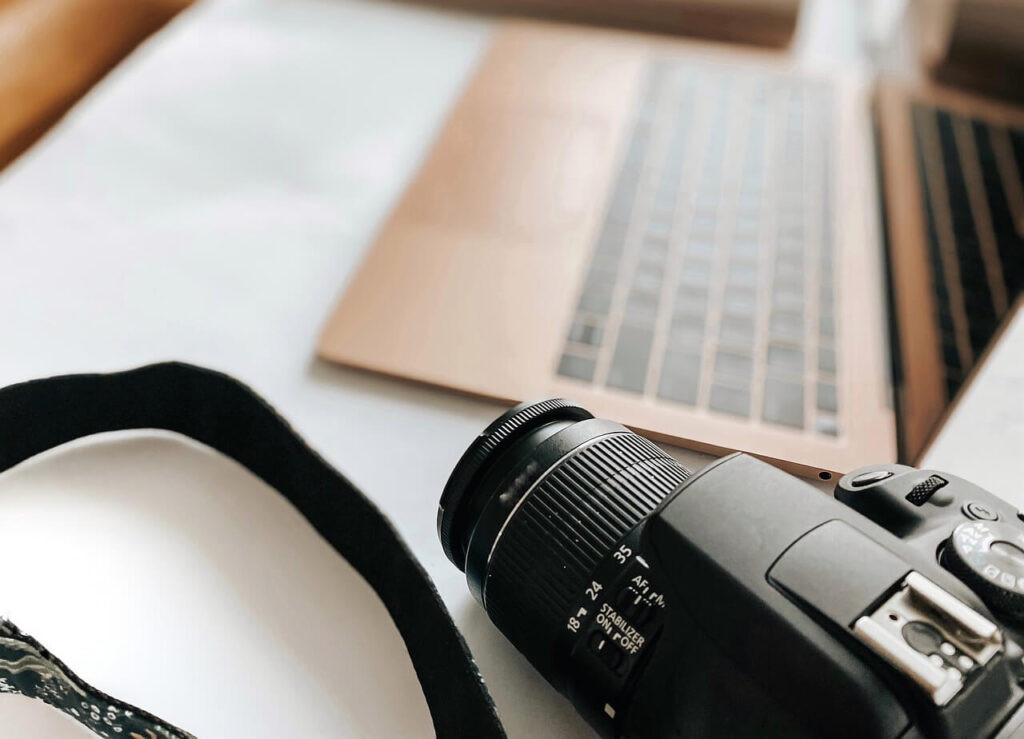Tax Tips For Photographers: Step-by-Step Guide
February 23, 2025
Tax season can feel overwhelming, especially when you’re running your own photography business. But with the right tax tips for photographers, you can stay organized, maximize your deductions, and avoid any last-minute stress. Whether you’re filing taxes for the first time or just want to make sure you’re doing everything right, this guide will walk you through the essentials. Plus, I’ve put together a free Photography Tax Checklist to help you stay on track all year long—keep reading to grab yours!

Tax Tip For Photographers #1: Gather Your Income Information
Before you can file your taxes, you need to know exactly how much money you made throughout the year. As a photographer, your income may come from multiple sources, so it’s important to keep track of everything.
Start by gathering all the payments you received for sessions, prints, albums, digital downloads, second shooting gigs, and any other services you offered. If you did any freelance or contract work for other businesses, you may receive a 1099-NEC form, which reports the amount a client paid you. However, keep in mind that not all clients will send you a 1099, especially if they paid you through PayPal, Venmo, or another third-party platform. Even if you don’t receive a tax form, you’re still responsible for reporting all income earned.
To make tax time easier, it helps to keep a running record of your income throughout the year. If you haven’t already, go through your invoices, bank deposits, or accounting software to make sure you have an accurate total before moving on to the next step.
Tax Tip For Photographers #2: Organize Your Business Expenses
Now for the fun part—finding ways to lower your tax bill. As a photographer, you can deduct a variety of business expenses, which means you’ll only pay taxes on your profits, not your total income. Keeping track of these expenses throughout the year will save you time (and stress) when it’s time to file.
Common Tax Deductions for Photographers
Here are some of the most common write-offs that can help reduce your taxable income:
- Equipment – Cameras, lenses, memory cards, tripods, external hard drives, and any other gear you use for your business.
- Software & Subscriptions – Lightroom, Photoshop, Showit, Canva, QuickBooks, and any other tools you need to run your business.
- Office & Studio Expenses – Rent, utilities, office supplies, and even a portion of your home if you work from a dedicated space.
- Marketing & Advertising – Website hosting, domain fees, business cards, paid ads, and branding materials.
- Travel & Transportation – Mileage, flights, hotels, and meals for business-related trips or destination shoots.
- Education & Training – Online courses, workshops, photography conferences, and business coaching.
- Insurance & Professional Fees – Business insurance, liability coverage, legal fees, and any CPA or bookkeeping services
Keep Your Records Organized
The IRS requires you to keep proper documentation of your expenses, so having a system in place is essential. Whether you use accounting software like QuickBooks, a simple spreadsheet, or a folder of receipts, make sure you’re tracking everything as you go. Not only will this make tax time easier, but it will also help you see how much you’re really spending on your business.
If you haven’t been keeping up with your records, don’t worry—now is the perfect time to go through your bank statements and credit card transactions to make sure nothing gets missed. Every deduction counts, so take the time to get everything in order before moving on to the next step.

Tax Tip For Photographers #3: Determine Your Business Structure
Before filing your taxes, it’s important to understand how your business is structured. The way you set up your photography business affects how you report income, pay taxes, and handle deductions. If you haven’t officially chosen a business structure, you’re most likely operating as a sole proprietor by default. Here’s a quick breakdown of the most common structures for photographers and how they impact taxes.
Sole Proprietor
- The simplest business structure, where you and your business are legally the same.
- You report your business income and expenses on Schedule C of your personal tax return.
- You’ll need to pay self-employment tax (which covers Social Security and Medicare) in addition to income tax.
- No legal separation between you and your business, meaning your personal assets could be at risk if your business faces legal trouble.
LLC (Limited Liability Company)
- Offers legal protection by separating your personal and business assets.
- Taxed the same as a sole proprietorship unless you elect S-Corp status.
- Still reports income and expenses on Schedule C, with self-employment tax obligations.
S-Corp (S Corporation)
- Can help reduce self-employment taxes by allowing you to pay yourself a reasonable salary and take additional income as distributions, which aren’t subject to self-employment tax.
- Requires more paperwork and an official tax election with the IRS.
- Best suited for photographers making a higher income (typically $50,000+ in profit) since the tax savings can outweigh the administrative costs.
Do You Need to Pay Quarterly Estimated Taxes?
Since taxes aren’t automatically withheld from self-employment income, you may need to pay estimated taxes throughout the year. The IRS requires quarterly tax payments if you expect to owe at least $1,000 in taxes for the year. Payments are due on:
- April 15
- June 15
- September 15
- January 15 (of the following year)
If you’re unsure whether you need to pay estimated taxes, a CPA or tax software can help calculate your payments. Keeping up with these payments will help you avoid penalties and a large tax bill in April.
Choosing the right business structure and staying on top of tax payments can make a big difference in how much you owe at tax time. If you’re not sure what’s best for your photography business, consider talking to an accountant to see if restructuring could help you save money.
Tax Tip #4: Understand Self-Employment Taxes
When you work for yourself, taxes look a little different than they do for traditional employees. Instead of having taxes withheld from a paycheck, self-employed photographers are responsible for paying their own taxes, which include both income tax and self-employment tax.
Self-employment tax covers Social Security and Medicare, similar to what employees have withheld from their paychecks. The difference is that employees only pay half of these taxes, while their employer covers the other half. As a self-employed photographer, you’re responsible for both portions, which adds up to 15.3% of your net earnings.
To calculate your self-employment tax, start with your total income, subtract your business expenses, and multiply your net profit by 15.3%. The good news is that you can deduct half of this tax when filing your return, which helps lower your overall taxable income.
If your business is making a steady profit, you might consider setting aside a percentage of each payment you receive to cover your taxes. A common rule of thumb is to save 25 to 30 percent of your income for taxes, but the exact amount depends on your total earnings and deductions. Paying estimated taxes throughout the year can also help prevent a large tax bill when you file.
Understanding how self-employment tax works will help you stay prepared and avoid surprises. Keeping track of your income and expenses throughout the year will make calculating your tax liability much easier when tax season rolls around.

Tax Tip #5: Take Advantage of Tax Deductions and Credits
One of the best ways to lower your tax bill is by making sure you’re claiming all the deductions and credits available to you as a photographer. While we’ve already covered common business expenses, there are additional tax breaks that could help you save even more.
Home Office Deduction
If you work from home and have a dedicated space used exclusively for your photography business, you may qualify for the home office deduction. This allows you to deduct a portion of your rent or mortgage, utilities, and internet based on the percentage of your home used for business. There are two ways to calculate this deduction:
- Simplified Method – Deduct $5 per square foot of your home office, up to 300 square feet.
- Actual Expenses Method – Calculate the percentage of your home used for business and apply that percentage to your total home-related expenses.
Vehicle and Mileage Deduction
If you use your car for business-related activities like driving to photo sessions, meetings, or the post office to ship client products, you can deduct those miles. There are two methods for claiming this deduction:
- Standard Mileage Rate – Deduct a set amount per mile driven for business (the IRS updates this rate annually).
- Actual Expenses – Deduct a percentage of gas, maintenance, insurance, and depreciation based on how much you use your car for business.
Whichever method you choose, be sure to keep a mileage log to track your business-related driving throughout the year.
Retirement Contributions
As a self-employed photographer, you don’t have an employer setting up a 401(k) for you, but that doesn’t mean you can’t save for retirement and get a tax break while doing it. Contributions to a SEP IRA, Solo 401(k), or Traditional IRA can reduce your taxable income while helping you plan for the future.
Health Insurance Deduction
If you pay for your own health insurance as a self-employed individual, you may be able to deduct the cost of your premiums. This can include medical, dental, and even some long-term care insurance costs, as long as you’re not eligible for an employer-sponsored plan through a spouse.
Education and Training
Any courses, workshops, or coaching programs you invest in to improve your photography skills or grow your business can be deducted as a business expense. This includes online classes, in-person workshops, and even books related to your industry.
Taking advantage of these deductions and credits can make a big difference in how much you owe at tax time. Keeping detailed records and saving receipts throughout the year will help ensure you don’t miss out on any tax savings.
Tax Tip #6: Know Your Filing Deadlines and Forms
Staying on top of tax deadlines is essential to avoiding penalties and unnecessary stress. As a self-employed photographer, you’ll need to file different forms than traditional employees, and knowing what to expect can make the process much smoother.
Important Tax Deadlines
- April 15 – The deadline for filing your personal tax return (unless you file an extension). This is also the due date for the first quarterly estimated tax payment for the new year.
- June 15 – Second quarterly estimated tax payment due.
- September 15 – Third quarterly estimated tax payment due.
- January 15 (of the following year) – Fourth quarterly estimated tax payment due.
If you need extra time to file your tax return, you can request a six-month extension, but this does not extend the time to pay any taxes owed. If you think you’ll owe, it’s best to make a payment with your extension to avoid penalties.
Common Tax Forms for Photographers
- Form 1040 – The main tax return form for individuals, where you’ll report your total income, deductions, and tax liability.
- Schedule C – Used to report business income and expenses. This is where you’ll list all your photography-related earnings and deductions.
- Schedule SE – Used to calculate self-employment tax.
- Form 1099-NEC – If you did freelance work for another company and earned $600 or more, they should send you this form showing the income you received.
- Form 1099-K – If you process payments through third-party platforms like PayPal, Stripe, or Square, you may receive this form if you meet the IRS reporting threshold.
- Form 8829 – If you’re claiming the home office deduction, you’ll need this form to calculate the allowable expenses.
If you hire second shooters, assistants, or other independent contractors and pay them $600 or more in a year, you’ll need to issue them a Form 1099-NEC and submit a copy to the IRS.
Filing the right forms on time is key to avoiding tax issues. If you’re unsure about what you need, working with a tax professional can help ensure everything is filed correctly.

Tax Tip #7: Keep Good Records to Make Tax Time Easier
One of the best things you can do to make tax season less stressful is to keep organized records throughout the year. Having a clear system in place for tracking income, expenses, and receipts will not only save you time but also ensure you don’t miss out on valuable deductions.
Set Up a Record-Keeping System
You can track your finances in a way that works best for you—whether that’s using accounting software like QuickBooks, a spreadsheet, or even a simple notebook. The key is to be consistent. Make it a habit to record your income and expenses regularly rather than scrambling at tax time.
Some things you should track:
- All payments received from clients, print sales, and other revenue sources
- Business expenses, including receipts for gear, software, office supplies, and travel
- Mileage logs for business-related driving
- Bank statements and invoices for easy reference
Keeping digital copies of receipts can be helpful in case you ever need them for an audit. Apps like Expensify or even just a folder on your computer can make it easy to store and organize receipts.
Separate Business and Personal Finances
If you haven’t already, open a separate bank account for your photography business. This makes it easier to track your income and expenses and ensures you’re not mixing personal and business funds. If you use a credit card for business purchases, consider getting one specifically for your business to simplify record-keeping.
Back Up Your Files
Technology isn’t always reliable, so be sure to back up your financial records regularly. Whether you use cloud storage or an external hard drive, having an extra copy of your records can save you a lot of headaches if something gets lost or corrupted.
By keeping good records year-round, you’ll have everything you need at your fingertips when tax season rolls around, making the process much smoother.

Tax Tip #8: Consider Working With a Tax Professional
Taxes can get complicated, especially when you’re self-employed. While it’s absolutely possible to do them yourself, working with a tax professional can save you time, stress, and potentially even money.
When to Hire a Tax Professional
If any of the following apply to you, it may be worth hiring an accountant or tax preparer:
- You’re unsure if you’re claiming all the deductions and credits you’re eligible for
- You had a big financial change, like making significantly more money or investing in new equipment
- You want to make sure you’re structuring your business in the most tax-efficient way
- You’re behind on filing taxes and need help catching up
- You received an audit notice or IRS letter and aren’t sure how to respond
A CPA or enrolled agent who specializes in working with small businesses or creative entrepreneurs will understand the unique needs of photographers and can help you navigate your taxes more efficiently.
How a Tax Professional Can Help
A good accountant can do more than just prepare your tax return. They can also:
- Help you plan ahead so you’re not caught off guard by a big tax bill
- Advise on the best way to structure your business for tax savings
- Make sure you’re keeping proper records and staying compliant with tax laws
- Answer any questions you have throughout the year, not just at tax time
Even if you prefer to file your own taxes, meeting with an accountant at least once a year for a tax planning session can help ensure you’re on the right track and making smart financial decisions for your business.
Conclusion: Take Control of Your Photography Taxes
Tax season doesn’t have to be stressful when you’re prepared. By staying organized, tracking your expenses, and taking advantage of available deductions, you can keep more of your hard-earned income and avoid any last-minute headaches. And if you’re looking for more ways to streamline your photography business, be sure to check out my business templates—from pricing guides to contracts, they’re designed to help you stay professional and organized year-round.
To make tax season even easier, don’t forget to grab your free Photography Tax Checklist by signing up for my email list. It’s a simple way to keep track of key deadlines, deductions, and everything else you need to stay on top of your taxes.
Leave a Reply Cancel reply
Site Design by Sara Martin Designs
Sara Martin Designs | All Rights Reserved